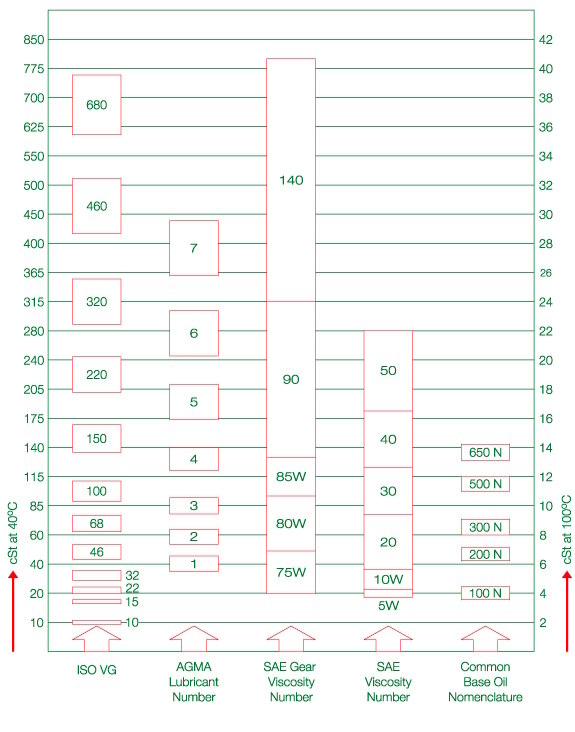Lubricant Viscosity Conversion Table
A Lubricant Viscosity Conversion Table is a reference chart used to compare the viscosity ratings of lubricants across different classification systems. These systems are used by various industries and organisations to grade lubricants based on their flow characteristics (viscosity), typically measured at specific temperatures.
Purpose:
The table helps users:
- Compare equivalent viscosity grades across systems like ISO VG, SAE (motor and gear), and AGMA.
- Select the right lubricant for machinery or vehicles when specifications are given in a different standard.
- Avoid confusion caused by different labelling and measurement methods.
Common Viscosity Standards in the Table:
| System | Description |
|---|---|
| ISO VG | International standard for industrial oils, based on kinematic viscosity at 40°C. |
| SAE Motor Oil | Rating system by the Society of Automotive Engineers for engine oils. Uses numbers like 10W-30, where "W" means winter performance. |
| SAE Gear Oil | Similar to motor oil ratings but specifically for gear oils. Not directly equivalent to motor oil grades. |
| AGMA | Used for lubricants in gear systems, mainly in industrial applications. |
Why it's useful:
For example, if a machine manual calls for ISO VG 100 oil, but only SAE gear oil is available, the conversion table helps identify the closest SAE gear oil grade (like SAE 90).
Example: Replacing an Industrial Gearbox Oil
Scenario:
You are maintaining an industrial gearbox in a manufacturing plant.
The manufacturer’s manual specifies:
“Use ISO VG 150 oil.”
However, your stockroom only carries oils labelled with SAE grades, and you need to find an equivalent.
Step-by-step use of the Conversion Table:
1. Find ISO VG 150 in the first column of the table.
2. Check the corresponding values in the other columns:
- Viscosity at 40°C: approx. 135 – 165 cSt
- SAE Gear Oil Equivalent: SAE 140
- AGMA Grade: 4
3. Based on this, you can confidently select:
- A SAE 140 gear oil as a suitable replacement for the ISO VG 150 oil.

You’ve correctly matched the oil using the table and ensured that your gearbox will run with a lubricant of equivalent viscosity and performance.
